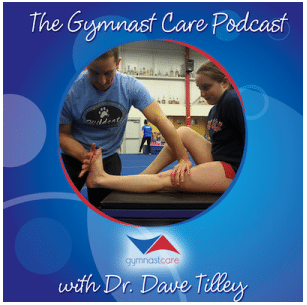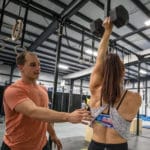Changing Gymnastics Culture : It’s Time to Have Some Really Hard Conversations
Before I dive into the background and why I wrote this book, if you are just looking for the download form you can find it here. As I will explain, it is 100% free and I am only asking for email/name verification in an effort to maintain website security, and also grow a network of people who sincerely want to help gymnastics move into a new era. Enjoy and hope it’s helpful!

Changing Gymnastics Culture:
Reflections, Lessons, and Thoughts for the Future
By Dr. Dave Tilley DPT, SCS, CSCS
*Over 13,000 Downloads Worldwide*
Gymnastics is in one of the darkest points in its history. In the twenty years that I have been involved in competitive gymnastics, I have never witnessed a more troubling period than the last year. Turmoil has engulfed the world of gymnastics as heartbreaking stories of abuse, corruption, toxic training cultures, questionable training methods, and wildly misguided morals have poured into the mainstream media.
Although I am not directly connected to anyone involved in these tragic stories of abuse, the gravity of these serious issues hits home for me. My entire life has been and continues to be, in gymnastics. After fifteen years competing up to the college level, and ten years coaching, I have spent the last five years as a medical provider treating almost all gymnasts (Sports Physical Therapy) while also still actively coaching competitive gymnastics at the same time.
I have been lucky that people valued my opinions and work enough to formally start an educational company (SHIFT Movement Science) in 2014. I have thankfully had the opportunity to travel both nationally and internationally to teach on various gymnastics topics.
I do not mean to brag. I only aim to provide context to readers that may be finding my website for the first time, that I have worked with thousands of gymnasts in the previous ten years. I am endlessly grateful for the opportunity to help people in the gymnastics community, connect with positive influences in the sport, and keep learning more.
Because of my involvement in gymnastics as a former gymnast, and current medical provider, coach, and educator, hundreds of people have contacted me in the last year with questions related to the issues that exist in our sport. These questions were mostly about the recent developments in the media, but also about my thoughts on gymnastics culture, training techniques, and methods that have been used for decades.
I have intentionally remained silent in the last year, only observing the events as they unfolded in mainstream news and social media. I did so not to avoid the challenging and uncomfortable conversations that I know needed to occur. I have so much respect for the people who are speaking up and speaking out against those who must be held accountable for their terrible actions. I wish swift justice is served to anyone who abused their position of power to hurt young men or women involved in gymnastics.
The truth is that I took my time to respond in an effort to fully process and articulate the problems I believe might have contributed to these crimes. I needed time to process the situation, read more research about the science behind gymnastics training, and construct my thoughts on where I feel problems have stemmed from.
I have watched the sport that I love, that made me into who I am, and the sport that so many of my friends grew up in, be destroyed in the last twelve months. Much of the disassembly is very necessary to hold those responsible for their actions. This said, there has been a ton of collateral damage coming down on the sport as a whole. In the wake of this dark time, I decided to do everything I could to spark positive change, given my experiences and unique points of view from a lifetime in gymnastics.
So, in an effort to help, I have spent the last twelve months writing a new e-book covering all of these topics and more. I wrote it in an effort to spark conversations on how the sport of gymnastics can move into a new era that prioritizes athlete health, builds positive training cultures, and seeks the most optimal training methods based on scientific research as well as expert coaching opinion.

After tons of work, I am happy to say that the book is finally finished, published, and ready for the gymnastics community to read. I am making the book 100% free for anyone to download (the download form is below and only requires email for security reasons), no strings attached. My hope is that by removing the financial and access barriers, people will be inclined to read it, share it online in their communities, and start moving the sport of gymnastics in a better direction.
This last year has only confirmed the fact that there are some huge issues in gymnastics culture, training, and methods, that need to change. We need to change our culture – not incrementally but dramatically. We need an overhaul. One that spares no aspect of our sport; that looks at the entire spectrum of issues ranging from individual values and morals, to specific training principles, to general training principles.
Some of the topics I address in the book are: personal leadership principles, culture development, flexibility methods, strength and cardio methods, gymnastics specific injuries, integrated medical care, year-round training, early specialization, the effects of stress on young gymnasts, and much more. The entire book blends advice from high-level coaches I have been lucky to learn from, with current medical and sports performance science, as well as my own experiences.
My goal was to address negative examples, and very important issues related to training methods, injuries, and cultural development that I think are largely being swept under the rug. I also wanted to highlight positive examples of our sport for best practices that people can use in their training. Despite the media shining a light on a handful of very negative people (as they should), we have to remember that there are thousands of fantastic gymnastics coaches, medical providers, parents, and support staff doing amazing work in our sport to help kids.
I have met hundreds of coaches and medical providers who lead their lives with high moral integrity, and are humbly doing hard work every day in the gym to help kids gain all of the incredible benefits from gymnastics. Moving forward, I feel these are the people are who we should look to emulate across the world in gymnastics. Within each section of writing, I aimed to combine many of their principles with the large body of sports medicine and sports performance research that is available.
The book ended up being 17 chapters, and about 450 pages. The larger book is broken up into three smaller books, as I know the background of readers will range quite a bit. The chapters are as follows.
- Section I – Individual Principles
- Chapter 1 – Personal Development, Self-Awareness, Values as Role Models and Leaders
- Chapter 2 – Lifelong Learning
- Chapter 3 – Continuing Education Outside of Gymnastics Specific Knowledge
- Chapter 4 – The Priority Hierarchy: Health First, Great People Second, Great Gymnastics Third
- Chapter 5 – Constructing Positive Training Environments and Cultures over Toxic Environments
- Chapter 6 – Collaboration and Interdisciplinary Training and Coaching Teams
- Section II – Specific Training Principles
- Chapter 7 – Updating Flexibility and Stretching Methods: Science Meets Practical Training
- Chapter 8 – Evolving Strength and Conditioning to a Hybrid Model that Blends Expert Opinion and Current Science
- Chapter 9 – Energy Systems Training and Metabolic Performance in Gymnastics
- Chapter 10 – Nutrition, Fueling for Performance, and Positive Body Image
- Chapter 11 – Recovery, Adaptation, Links to Optimal Health and Sports Performance
- Chapter 12 – Common Injuries and Theoretical Contributing Factors for Medical Providers and Coaches to Focus on
- Section III – General Training Principles
- Chapter 13 – Gymnastics Sports Medicine and Integrated Maintenance Care for Athletes
- Chapter 14 – Long-Term Athletic Development in Gymnastics
- Chapter 15 – Combatting Early Sports Specialization and Year-Round Training in Gymnastics
- Chapter 16 – Stress Neuroendocrinology in Gymnasts: Links to Physical Health, Mental Health, and Optimal Performance
- Chapter 17 – Concluding Thoughts, Future Steps, and the Next Era of Gymnastics
I certainly do not have all the answers to these very complex questions. I have not coached Divison 1 or elite gymnasts, and I still have an incredible and humbling amount to learn.
However, I am very fortunate that the last ten years have allowed me to work with some of the highest-level gymnasts, gymnastics coaches, and non gymnastics based sports medicine experts. Through all of this, I have found that the principles covered in the book span all levels of gymnastics, from recreational to the international elite.
It is time we all put the daily training practices we use under a microscope. It is time to have some painful conversations about whether our current approach is the most optimal approach as it relates to health as well as performance. Fundamental to that conversation is an even deeper, and harder one: we all need to examine ourselves, our morals, values, and sources of motivation we hold as leaders and role models in the gymnastics community. Looking back on my career as a younger coach, I realize there were many mistakes I made that I made leading to very suboptimal training results. I have had these tough conversations with myself. Although they are uncomfortable, they must occur in everyone.
In a collaborative and professional manner, we must start having conversations about how to build a new era of gymnastics, one that prioritizes the health, longevity, and long-term success of young gymnasts over scores, medals, and money.
We must seriously reconsider what “success” means in gymnastics.
Below is an opt-in form for the book, where you simply need to put in your name and email as a basic security check. I will be 100% transparent about this: the reason I am asking for an email is to so that my website does not become subject to security breaches. I value the personal information of people in the SHIFT community and hold their privacy to the absolute highest priority. Requiring a valid email address with added layers of protection significantly reduces the risk of issues. The second reason I am asking for email authentication is to help grow a network of people who honestly, and sincerely, care about improving gymnastics.
Other than this, the book is entirely free for the gymnastics community to read, think about, and discuss. I will also state outright that despite hundreds of hours in editing and revision from myself and others, I’m sure there are small mistakes that were not caught. I hope readers can forgive a few small errors or misdirected URL links. In the next few months, I will continue to revise it and make sure to post the most current version as these errors pop up.
None the less, I hope that this book helps move the sport in a better direction by sparking the difficult-but-necessary conversations. There are many people doing important work in gymnastics, and this is just my small contribution. Here is the form to fill out and receive the book download link.

Changing Gymnastics Culture:
Reflections, Lessons, and Thoughts for the Future
By Dr. Dave Tilley DPT, SCS, CSCS
*Over 13,000 Downloads Worldwide*
I welcome comments and alternative points of view regarding the material. This is how as a whole in the gymnastics community, together we can begin finding the right answers to some very complex questions.
Cheers to the future of gymnastics, and I hope everyone finds the book helpful.
Dave Tilley DPT, SCS, CSCS
CEO/Founder of SHIFT Movement Science









